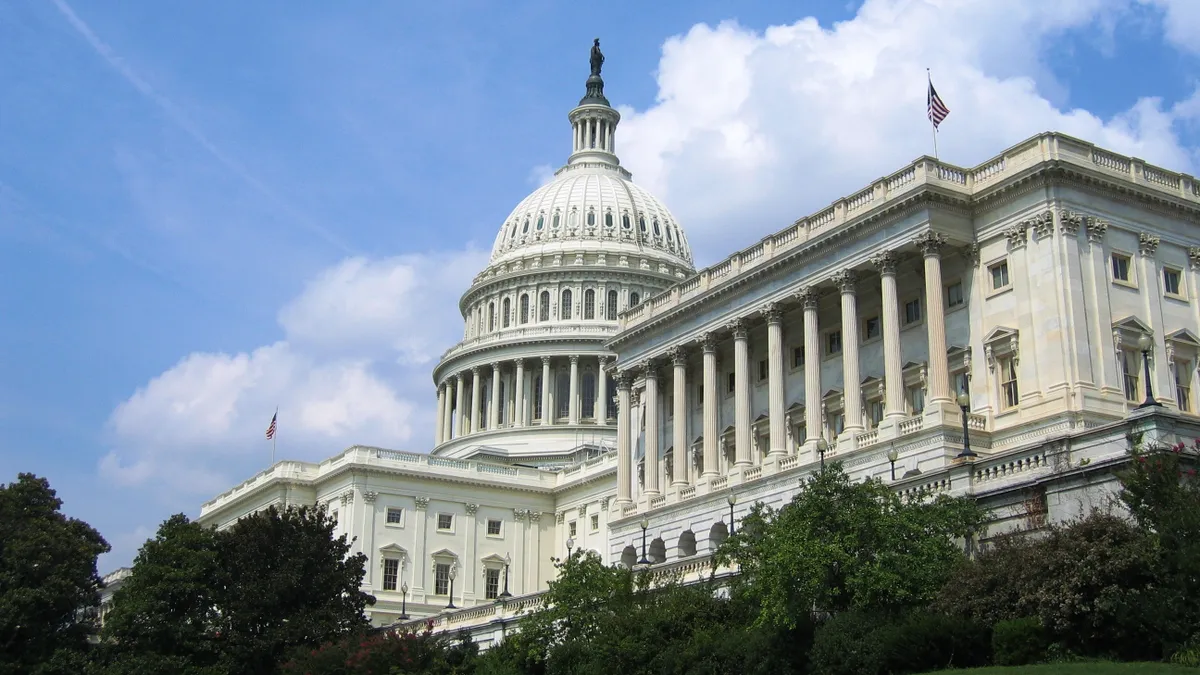UPDATE: July 18, 2019: The House passed the Raise the Wage Act Thursday, 231-199. The bill's sponsors added a provision that extended the original 2024 deadline for a $15 minimum wage to 2025, according to the New York Times. Senate Majority Leader Mitch McConnell may not introduce the bill into the Senate, according to reports from CNBC. "We're not going to be doing that in the Senate," CNBC reported McConnell saying on Fox Business Network.
Dive Brief:
- Federal lawmakers have introduced a bill that would raise the nation's minimum wage to $15 per hour, according to the House Committee on Education and Labor. Rep. Bobby Scott (D-VA) and Sen. Bernie Sanders (I-VT) introduced the measures in their respective houses, with 181 and 31 cosponsors, respectively.
- The Raise the Wage Act of 2019 would gradually raise the federal minimum wage from $7.25 to $15 by 2024, according to a fact sheet. Additionally, it would "index future increases in the federal minimum wage to median wage growth" to prevent the value of minimum wage from eroding, the fact sheet said.
- The law also would do away with the tipped minimum wage and subminimum wage certificates for workers with disabilities.
Dive Insight:
When color coded by minimum wage standards, a map of the U.S. looks like a patchwork quilt. By enacting a threshold that surpasses the vast majority of current minimum wage laws, the Raise the Wage Act could make most of them largely irrelevant. It's potential for success, however, remains to be seen as economists, business owners, legislators and other leaders debate such an increase's impact on employment, wages and the overall economy.
The national minimum wage has sat at $7.25 per hour since the Fair Minimum Wage Act of 2007 went into full effect in 2009. But many employers have dealt with minimum wage changes — or at least pushes for changes — during the last 10 years. While Congress has seen the Fair Minimum Wage Act of 2013, a similar measure in 2014, the Pay Workers a Living Wage Act of 2015 and the Raise the Wage Act of 2017 all largely languish in committee, boosts to minimum wage have enjoyed success at the state level — hence the quilt. Nineteen states rang in the new year with new minimum wage standards. Wage-lifting legislation also went into effect on New Year's Day in 24 cities and counties, according to the Economic Policy Institute. This complicates payday for businesses operating in multiple locations, even if they're contained within a single state.
These measures, of course, spark concern among employers and employees. In New York City, the minimum wage for employers with 11 or more workers jumped more than 15% on Dec. 31 to $15 per hour. Some restaurant owners in the city have said the hike forced them to slash workers' hours, according to CBS News. One owner told CBS that he had to increase menu prices while decreasing services that made his restaurant a fine dining experience. "It's not great for labor, it's not great for the people who invest in or own restaurants, and it's not great for the public," he said.
Economists, meanwhile, have not landed on any firm conclusions about such a wage increase. According to the Washington Post, researchers at the University of California-Los Angeles found that, within the restaurant industry, wage hikes in 2007 and 2008 yielded about a 10% increase in earnings but reduced employment by 12%. When the state's minimum wage reached $10.50 by 2017, earnings jumped by 20% while employment fell by another 10%. Another paper by a U.C. Berkeley team, however, found that wage increases made for fatter paychecks while having insignificant effects on employment.













